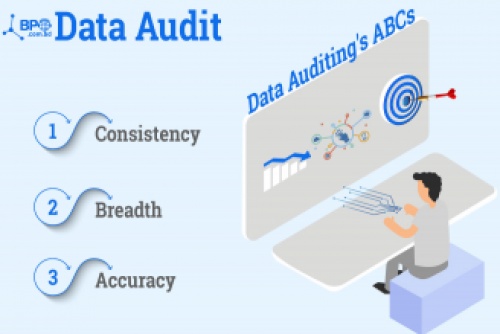When it comes to data handling, auditing data entry is a very significant topic.
While it may appear complicated at first, we're here to simplify it so you don't have to resort to Wikipedia for an explanation.
What Is The Definition Of Data Auditing?
Data entry audit process, examine data in order to evaluate its quality or for a specific goal. This entails profiling the data and identifying records that are incomplete, the person is no longer listed on the MPS (Mailing Preference Service) register (goneaway), or, worst of all, deceased.
By 2021, Gartner predicts that more than 40% of all data and analytics projects will be related to customer experience (CX) (full article available to Gartner clients).
Focus Points:
Talking to folks that utilize that data on a regular basis may be part of the process, and this can help you figure out what issues they're having with it.
A frequent data audit will assure data integrity and enable you to identify issues that need to be addressed, which will benefit the entire company.
Internal audits provide a value-added service to management and the board of directors by catching and correcting process issues before external audits.
Process of Internal Auditing
Internal auditors evaluate the department's performance, conduct fieldwork testing, and follow up with employees on issues that have been detected. They draft an official audit report, which they discuss with management and the board of directors.
Audit Data Analytics Has A Variety Of Values
An auditor may now review significantly more data than was previously feasible with audit sampling thanks to the audit data analyst. This enables better preparation ahead of time and, as a result of any anomalies or trends discovered, better risk assessments. Furthermore, because the auditor can review considerably more data, it produces higher-quality audit data analytics evidence. Finally, it leads to more issues being communicated to the customer, which may be of interest to those in charge of the client's governance.
Audit Data Analytics Has Its Drawbacks
Auditors can improve the quality and quantity of client data they can analyze by employing audit data analysts. However, it necessitates a new set of skills for which auditors may lack training or expertise. Smaller audit businesses may also be unable to pay the costs of audit data analysts software.
Why Do You Need a Data Audit, and How Do You Go About Conducting One?
We'll go over the ABCs and 1-2-3s of a successful data entry audit process in this introduction to data auditing.
Data auditing in a summary is as easy as 1-2-3.
Involve the right people: To find out who is using CX-relevant data, schedule a meeting with division heads or conduct a corporate survey. These parties should be able to inform you what data they use and where it is kept. Use the information to identify stakeholders that should be included in your auditing data entry.
Make a map of your data and how it's stored: Take note of how frequently data is being collected or updated. You should have a deep understanding about your own organization's data entry audit process design by the end of this step.
Examine the quality of the information you have: Examine your data for consistency, correctness, and breadth. Keep an eye out for recurring errors, faults with formatting or structuring, gaps, or other issues with the data you're using.
Data Auditing's ABCs
You can focus on the data quality that now you know who accesses your data, how they utilize it, and how/where it's stored. Use quality, breadth, and stability as basic values to evaluate data quality.
Accuracy:You can use automation techniques to reduce human error and improve data analysis accuracy. In its database for small enterprises, Capterra includes a number of freemium choices.
Breadth: We define breadth as data that covers your intended scope and represents your target demographic. Identifying and resolving data breadth concerns requires collaboration with stakeholders.
Consistency: Data that follows particular forms and techniques without gaps or inconsistencies is referred to as consistency. When filtering for analysis, if there are any irregularities in the data format, some information may be lost.
When the Audit is Completed, What Happens Next?
An audit of your personal and business mail records is free, and there is no obligation to take anything as a result of it. The costs of eliminating the data will be incurred, but the savings will always outweigh the printing and mailing costs. After all, who would send mail to a deceased person if they knew the record could be wiped clean?
Need Help?
We understand that it's a lot to take in. That's why we're here to assist you if you're unclear of how to go or what to do with your data, and the audit is completely free.
No problem, give us a call here if you'd like to have a quick talk with one of our team members. There is no such thing as a silly question when it comes to auditing data entry and direct mail!












